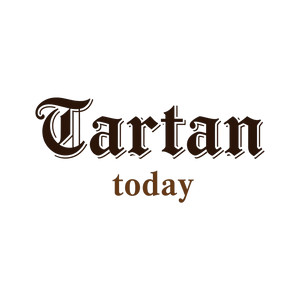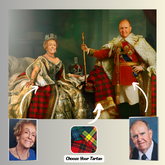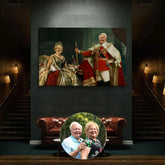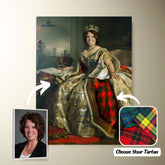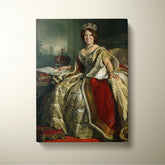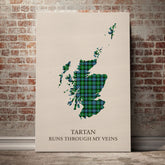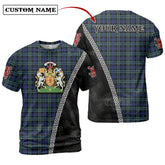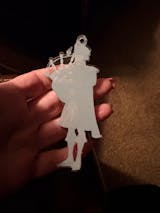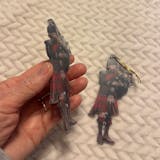-
Personalized Clan Arbuthnot Modern Tartan Bagpipe Ornament with Custom Name – Scottish Christmas Tree Decoration XM50
Personalized Clan Arbuthnot Modern Tartan Bagpipe Ornament with Custom Name – Scottish Christmas Tree Decoration XM50Celebrate your Scottish heritage with this unique wood & acrylic tartan ornament. Perfect as a personalized Christmas decoration or a meaningful gift for friends and relatives on special occasions...- From $19.99 USD
$25.99 USD- From $19.99 USD
- Unit price
- per
Save $6.00 -
Personalized Clan Arbuthnot Ancient Tartan Bagpipe Ornament with Custom Name – Scottish Christmas Tree Decoration FY36
Personalized Clan Arbuthnot Ancient Tartan Bagpipe Ornament with Custom Name – Scottish Christmas Tree Decoration FY36Celebrate your Scottish heritage with this unique wood & acrylic tartan ornament. Perfect as a personalized Christmas decoration or a meaningful gift for friends and relatives on special occasions...- From $19.99 USD
$25.99 USD- From $19.99 USD
- Unit price
- per
Save $6.00 -
Personalized Clan Arbuthnot Modern Tartan Drummer Ornament with Custom Name – Scottish Christmas Tree Decoration RM75
Personalized Clan Arbuthnot Modern Tartan Drummer Ornament with Custom Name – Scottish Christmas Tree Decoration RM75Celebrate your Scottish heritage with this unique wood & acrylic tartan ornament. Perfect as a personalized Christmas decoration or a meaningful gift for friends and relatives on special occasions...- From $19.99 USD
$25.99 USD- From $19.99 USD
- Unit price
- per
Save $6.00 -
Personalized Clan Arbuthnot Ancient Tartan Drummer Ornament with Custom Name – Scottish Christmas Tree Decoration WG95
Personalized Clan Arbuthnot Ancient Tartan Drummer Ornament with Custom Name – Scottish Christmas Tree Decoration WG95Celebrate your Scottish heritage with this unique wood & acrylic tartan ornament. Perfect as a personalized Christmas decoration or a meaningful gift for friends and relatives on special occasions...- From $19.99 USD
$25.99 USD- From $19.99 USD
- Unit price
- per
Save $6.00 -
Personalized Clan Arbuthnot Reproduction Tartan Bagpipe Ornament with Custom Name – Scottish Christmas Tree Decoration CN70
Personalized Clan Arbuthnot Reproduction Tartan Bagpipe Ornament with Custom Name – Scottish Christmas Tree Decoration CN70Celebrate your Scottish heritage with this unique wood & acrylic tartan ornament. Perfect as a personalized Christmas decoration or a meaningful gift for friends and relatives on special occasions...- From $19.99 USD
$25.99 USD- From $19.99 USD
- Unit price
- per
Save $6.00 -
Personalized Clan Arbuthnot Weathered Clan Crest Tartan Santa Ornament – Custom Acrylic Christmas Decoration IH71 - Arbuthnot
Personalized Clan Arbuthnot Weathered Clan Badge Tartan Ornament – Custom Acrylic Christmas Decoration IH71Celebrate your Scottish heritage with this unique wood & acrylic tartan ornament. Perfect as a personalized Christmas decoration or a meaningful gift for friends and relatives on special occasions such as...- From $19.99 USD
- From $19.99 USD
- Unit price
- per
-
Arbuthnot
-
Personalized Clan Arbuthnot Modern Clan Crest Tartan Santa Ornament – Custom Acrylic Christmas Decoration ZH17 - Arbuthnot
Personalized Clan Arbuthnot Modern Clan Badge Tartan Ornament – Custom Acrylic Christmas Decoration ZH17Celebrate your Scottish heritage with this unique wood & acrylic tartan ornament. Perfect as a personalized Christmas decoration or a meaningful gift for friends and relatives on special occasions such as...- From $19.99 USD
- From $19.99 USD
- Unit price
- per
-
Arbuthnot
-
Personalized Clan Arbuthnot Ancient Clan Crest Tartan Santa Ornament – Custom Acrylic Christmas Decoration XB58 - Arbuthnot
Personalized Clan Arbuthnot Ancient Clan Badge Tartan Ornament – Custom Acrylic Christmas Decoration XB58Celebrate your Scottish heritage with this unique wood & acrylic tartan ornament. Perfect as a personalized Christmas decoration or a meaningful gift for friends and relatives on special occasions such as...- From $19.99 USD
- From $19.99 USD
- Unit price
- per
-
Arbuthnot
-
Clan Arbuthnot Ancient Tartan Crest Rug – Scottish Highland Carpet for Living Room, Celtic Home Decor & Scotland Gift FV47
Clan Arbuthnot Ancient Tartan Crest Rug – Scottish Highland Carpet for Living Room, Celtic Home Decor & Scotland Gift FV47Bring timeless Scottish charm into your home with our premium Tartan Area Rug. Designed with authentic Scottish tartan patterns, this rug is perfect for adding...- From $58.45 USD
- From $58.45 USD
- Unit price
- per
-
Clan Arbuthnot Modern Tartan Rug – Scottish Highland Carpet for Living Room, Celtic Home Decor & Scotland Gift VB95
Clan Arbuthnot Modern Tartan Rug – Scottish Highland Carpet for Living Room, Celtic Home Decor & Scotland Gift VB95Bring timeless Scottish charm into your home with our premium Tartan Area Rug. Designed with authentic Scottish tartan patterns, this rug is perfect for adding a...- From $58.45 USD
- From $58.45 USD
- Unit price
- per
-
Clan Arbuthnot Ancient Tartan Rug – Scottish Highland Carpet for Living Room, Celtic Home Decor & Scotland Gift QH20
Clan Arbuthnot Ancient Tartan Rug – Scottish Highland Carpet for Living Room, Celtic Home Decor & Scotland Gift QH20Bring timeless Scottish charm into your home with our premium Tartan Area Rug. Designed with authentic Scottish tartan patterns, this rug is perfect for adding a...- From $58.45 USD
- From $58.45 USD
- Unit price
- per
-
Custom Name Clan Arbuthnot Modern Tartan Garden Flag with Clan Crest and the Golden Sword of Courageous Legacy EU97 - Arbuthnot Modern
Custom Name Clan Arbuthnot Modern Tartan Garden Flag with Clan Crest and the Golden Sword of Courageous Legacy EU97 Immerse your space in the rich heritage of Scotland with our Tartan Garden Flags, exclusively from Tartan Today. Featuring vibrant tartan and Scottish heritage designs, these...- From $34.45 USD
- From $34.45 USD
- Unit price
- per
-
Arbuthnot Modern
-
Custom Name Clan Arbuthnot Ancient Tartan Garden Flag with Clan Crest and the Golden Sword of Courageous Legacy WD39 - Arbuthnot Ancient
Custom Name Clan Arbuthnot Ancient Tartan Garden Flag with Clan Crest and the Golden Sword of Courageous Legacy WD39 Immerse your space in the rich heritage of Scotland with our Tartan Garden Flags, exclusively from Tartan Today. Featuring vibrant tartan and Scottish heritage designs, these...- From $34.45 USD
- From $34.45 USD
- Unit price
- per
-
Arbuthnot Ancient
-
Clan Arbuthnot Modern Tartan Scotland Map Canvas “Tartan Runs Through My Veins” Wall Art TG46
Clan Arbuthnot Modern Tartan Scotland Map Canvas “Tartan Runs Through My Veins” Wall Art TG46Celebrate your Scottish heritage with this striking canvas print featuring the map of Scotland filled with Arbuthnot Modern tartan, paired with the bold phrase: “Tartan Runs Through My Veins.” Whether...- From $35.05 USD
- From $35.05 USD
- Unit price
- per
-
Clan Arbuthnot Ancient Tartan Scotland Map Canvas “Tartan Runs Through My Veins” Wall Art XD47
Clan Arbuthnot Ancient Tartan Scotland Map Canvas “Tartan Runs Through My Veins” Wall Art XD47Celebrate your Scottish heritage with this striking canvas print featuring the map of Scotland filled with Arbuthnot Ancient tartan, paired with the bold phrase: “Tartan Runs Through My Veins.” Whether...- From $35.05 USD
- From $35.05 USD
- Unit price
- per
-
Personalized Clan Arbuthnot Modern Tartan Shirt with Scotland Coat of Arms & Custom Name ZX43 - Arbuthnot Modern
Arbuthnot Modern Tartan Shirt with Scotland Coat of Arms & Custom Name ZX43Celebrate your Scottish heritage with this Arbuthnot Modern Tartan Shirt with Scotland Coat of Arms & Custom Name ZX43, featuring a bold Scotland Coat of Arms and your custom name on the...- From $39.54 USD
- From $39.54 USD
- Unit price
- per
-
Arbuthnot Modern
-
Personalized Clan Arbuthnot Ancient Tartan Shirt with Scotland Coat of Arms & Custom Name SZ88 - Arbuthnot Ancient
Arbuthnot Ancient Tartan Shirt with Scotland Coat of Arms & Custom Name SZ88Celebrate your Scottish heritage with this Arbuthnot Ancient Tartan Shirt with Scotland Coat of Arms & Custom Name SZ88, featuring a bold Scotland Coat of Arms and your custom name on the...- From $39.54 USD
- From $39.54 USD
- Unit price
- per
-
Arbuthnot Ancient
-
Clan Arbuthnot Modern Tartan Custom Face Hawaiian Shirt – Unisex Gift for Family Members, Summer Party XB13 - Arbuthnot Modern Tartan
Clan Arbuthnot Modern Tartan Custom Face Hawaiian Shirt – Unisex Gift for Family Members, Summer Party XB13?? Stand out with our custom face Hawaiian shirt featuring your chosen tartan pattern and up to 10 faces printed for free! Whether it's your own, your pet's,...- $42.25 USD
$59.99 USD- $42.25 USD
- Unit price
- per
Save $17.74-
Arbuthnot Modern Tartan
-
Clan Arbuthnot Ancient Tartan Custom Face Hawaiian Shirt – Unisex Gift for Family Members, Summer Party OH52 - Arbuthnot Ancient Tartan
Clan Arbuthnot Ancient Tartan Custom Face Hawaiian Shirt – Unisex Gift for Family Members, Summer Party OH52?? Stand out with our custom face Hawaiian shirt featuring your chosen tartan pattern and up to 10 faces printed for free! Whether it's your own, your pet's,...- $42.25 USD
$59.99 USD- $42.25 USD
- Unit price
- per
Save $17.74-
Arbuthnot Ancient Tartan
-
Clan Arbuthnot Modern Tartan Flat Cap SI13 - Clan Arbuthnot Modern Tartan
Clan Arbuthnot Modern Tartan Flat Cap SI13Elevate Your Heritage: The Authentic Tartan Jeff Cap Step into a legacy of timeless style and comfort with our Authentic Tartan Flat Cap. Crafted for the discerning American who cherishes their Scottish roots and appreciates classic elegance, this isn’t...- From $33.85 USD
$45.59 USD- From $33.85 USD
- Unit price
- per
Save $11.74-
Clan Arbuthnot Modern Tartan
Ex: Your Tartan + Product
Popular Products
Turn Me Royal Personalized Portrait from Your Photo, Custom Tartan. Custom Canvas Wall Art as Gift for Men
- From $32.45 USD
- From $32.45 USD
- Unit price
- / per
Royalty Couple Personalized Portrait from Your Photo, Custom Tartan. Custom Canvas Wall Art
- From $47.45 USD
- From $47.45 USD
- Unit price
- / per
The Queen Personalized Portrait from Your Photo, Custom Tartan. Custom Canvas Wall Art as Gift for Women
- From $32.45 USD
- From $32.45 USD
- Unit price
- / per
Which Clan Are You From?
List Of Tartan
-
Clan A
- Abercrombie Tartan
- Aberdeen Tartan
- Abernethy Tartan
- Adair Tartan
- Adam Tartan
- Ayrshire Tartan
- Agnew Tartan
- Aikenhead Tartan
- Ainslie Tartan
- Aiton Tartan
- Allan Tartan
- Alexander Tartan
- Allardice Tartan
- Allison Tartan
- Anderson Tartan
- Angus Tartan
- Anstruther Tartan
- Arbuthnot Tartan
- Armstrong Tartan
- Arnott Tartan
- Auchinleck Tartan
- Ayrshire Tartan
-
Clan B
- Baillie Tartan
- Bain Tartan
- Baird Tartan
- Balfour Tartan
- Bannatyne Tartan
- Bannerman Tartan
- Barclay Tartan
- Baxter Tartan
- Beaton Tartan
- Bell Tartan
- Belshes Tartan
- Bethune Tartan
- Beveridge Tartan
- Binning Tartan
- Bisset Tartan
- Blackadder Tartan
- Blackstock Tartan
- Black Watch Tartan
- Blair Tartan
- Blane Tartan
- Blyth Tartan
- Borthwick Tartan
- Boswell Tartan
- Bowie Tartan
- Boyd Tartan
- Boyle Tartan
- Brisbane Tartan
- Brodie Tartan
- Brown/ Broun Tartan
- Bruce Tartan
- Buccleuch Tartan
- Buchan Tartan
- Buchanan Tartan
- Burnett Tartan
- Burns Tartan
- Butter Tartan
- Byres Tartan
-
Clan C
- Cairns Tartan
- Calder Tartan
- Callander Tartan
- Cameron Tartan
- Campbell Tartan
- Campbell of Breadalbane Tartan
- Campbell of Cawdor Tartan
- Carmichael Tartan
- Carnegie Tartan
- Carruthers Tartan
- Cathcart Tartan
- Chalmers Tartan
- Charteris Tartan
- Chattan Tartan
- Cheyne Tartan
- Chisholm Tartan
- Christie Tartan
- Clark Tartan
- Clelland Tartan
- Clephan Tartan
- Clergy Tartan
- Cochrane Tartan
- Cockburn Tartan
- Colquhoun Tartan
- Colville Tartan
- Cooper Tartan
- Couper Tartan
- Craig Tartan
- Cranstoun Tartan
- Crawford Tartan
- Crichton Tartan
- Crief District Tartan
- Crosbie Tartan
- Cumming Tartan
- Cunningham Tartan
- Currie Tartan
- Clan D
- Clan E
- Clan F
- Clan G
- Clan H
- Clan I
- Clan J
- Clan K
- Clan L
-
Clan M
- Maitland Tartan
- Malcolm Tartan
- Mar Tartan
- Marjoribanks Tartan
- Maxtone Tartan
- Matheson Tartan
- Maule Tartan
- Maxwell Tartan
- Meldrum Tartan
- Melville Tartan
- Menzies Tartan
- Mercer Tartan
- Middleton Tartan
- Moffat Tartan
- Moncrieffe Tartan
- Montgomery Tartan
- Monypenny Tartan
- Moncreiffe Tartan
- Monteith Tartan
- Morrison Tartan
- Mouat Tartan
- Moubray Tartan
- Mow Tartan
- Muir_More Tartan
- Muirhead Tartan
- Munro Tartan
- Murray Tartan
- Murray of Atholl Tartan
-
Clan Mc/Mac
- MacAlister Tartan
- MacArthur Tartan
- MacAlpine Tartan
- MacAulay Tartan
- MacBain Tartan
- MacBean Tartan
- MacBeth Tartan
- MacCallum Tartan
- MacCraig Tartan
- MacColl Tartan
- MacCorquodale Tartan
- MacDiarmid Tartan
- MacDonald Tartan
- MacDonald of Clanranald Tartan
- MacDonald of Sleat Tartan
- MacDonnell of Glengarry Tartan
- MacDonnell of Keppoch Tartan
- MacDougall Tartan
- MacDowall Tartan
- MacDuff Tartan
- MacEwen_MacEwan Tartan
- MacEdward Tartan
- MacFarlane Tartan
- MacGill Tartan
- MacGillivray Tartan
- MacGregor Tartan
- MacGowan (McGowan) Tartan
- MacHardy Tartan
- MacIan Tartan
- MacInnes Tartan
- MacIntyre Tartan
- MacKay Tartan
- MacKillop Tartan
- MacKellar Tartan
- Mackinlay Tartan
- MacKenzie Tartan
- Mackie Tartan
- MacKinnon Tartan
- MacKintosh / MacIntosh Tartan
- MacLeod Tartan
- MacMillan Tartan
- MacNab Tartan
- MacNaughton Tartan
- MacNeil / MacNeill Tartan
- MacNeil of Colonsay Tartan
- MacNicol Tartan
- MacPhail Tartan
- MacPhee_MacFie Tartan
- MacPherson Tartan
- MacQuarrie Tartan
- MacQueen Tartan
- MacRae Tartan
- MacRow Tartan
- MacSporran Tartan
- MacTaggart Tartan
- MacTavish Tartan
- MacThomas Tartan
- McCorquodale Tartan
- McCulloch Tartan
- McFadzen Tartan
- McGeachie Tartan
- McIver Tartan
- McKerrell Tartan
- Clan N
- Clan O
- Clan P
- Clan R
-
Clan S
- Sandilands Tartan
- Scott Tartan
- Scrymgeour Tartan
- Selkirk Tartan
- Sempill Tartan
- Seton Tartan
- Shaw Tartan
- Shepherd Tartan
- Sinclair Tartan
- Skene Tartan
- Skirving Tartan
- Smith Tartan
- Somerville Tartan
- Spalding Tartan
- Spens Tartan
- Spottiswood Tartan
- Stevenson Tartan
- Stewart Tartan
- Stewart of Appin Tartan
- Stirling Tartan
- Strachan Tartan
- Straiton Tartan
- Strange Tartan
- Strathclyde District Tartan
- Stuart of Bute Tartan
- Sutherland Tartan
- Swinton Tartan
- Clan T
- Clan U W Y
- Request Your Clan
Clan Arbuthnot (Arbuthnot Tartan)
1. Clan Arbuthnot History (Arbuthnot Tartan)
The name Arbuthnot derives from the historic Arbuthnot estates in Kincardineshire. Hugh married the daughter of Osbert Olifard (or Oliphant), a.k.a. "The Crusader," and the Swinton family acquired ownership of these territories. Around 1175, William the Lion handed Olifard the territories, leading to the family's adoption of the name.
Early records refer to the location as "Aberbothenoth," which has been either interpreted as "the mouth of the stream below the noble house" or "the meeting of the small stream with the river."
With Philip de Arbuthnott, the family's name Arbuthnot was first mentioned in 1355.
The most notorious incident involving the Arbuthnot family occurred about 1420 when Phillips' son Hugh was a member of a group charged with killing the local sheriff, John Melville of Glenbervie.
Melville was a severe authoritarian whose hard attitude had made him very unpopular with many local lairds. It was reported that the Duke of Albany, the Regent of Scotland at the time, expressed his "sorrow gin that sheriff were sodden and supped in broo" after growing weary of hearing complaints.
With worrisome results, the Lairds of Mather, Arbuthnott, Pitarrow, and Halkerton took his remarks very literally.
They set up an ambush after inviting the sheriff to go hunting with them in the Garvock Forest. He is said to have been slain by being dropped into boiling water.
Each conspirator drank some of the ensuing broth once the Sheri had been successfully poached. Following his pardon for his involvement, Arbuthnott passed away in 1446.
A prominent member of the Church of Scotland, Alexander Arbuthnot was appointed Moderator of the General Assembly in 1577. He complained to James VI of Scotland in 1583 under pressure from the assembly about a number of 'popish practices' that the King was still allowing.
However, the king did not respond well to this complaint, and he was placed under house arrest and kept at St. Andrews. His financial downfall ultimately to an early death later that year.
However, the Arbuthnot family fortunes recovered when Sir Robert Arbuthnott was elevated to the rank of 1st Viscount of Arbuthnott and Baron Inverbervie by Charles I of England, probably in an effort to win some support in the provinces north of the border.
Dr. John Arbuthnot was another Arbuthnot whose career flourished as a result of royal connections. But in this instance, it had more to do with being at the appropriate location and moment. Prince George of Denmark, Anne of Great Britain's husband, became ill in 1705 while visiting the Epsom races.
The prince thankfully recovered, and Dr. Arbuthnot was named a royal physician after being hurried to care for him.
His position helped him win the queen's trust and the friendship of many prominent people, including Dr. Samuel Johnson, who described him as "a man of great comprehension, skilled in his profession, versed in the sciences, familiar with ancient literature, and able to animate his mass of knowledge by a bright and active imagination."
From 1818 to 1847, the eighth Viscount of Arbuthnott served as Kincardineshire's Lord Lieutenant and a representative peer representing Scotland in Parliament.
Following the passing of his father in 1966, John Arbuthnott, 16th Viscount of Arbuthnott, was appointed chief. He received the Distinguished Service Cross during World War II, and in 1985 he was given the CBE designation by the Order of the British Empire. He received the title of Knight of the Thistle in 1997.
At the age of 87, the 16th Viscount passed away on July 14, 2012. The Rt Hon. Keith Arbuthnott, his son, succeeded him as the 17th Viscount of Arbuthnott and Clan Chief.
Up until the current Viscount of Arbuthnott, this Arbuthnot land has been in the possession of the same family for more than 24 generations. A few miles south-west of Stonehaven is where Arbuthnott House is located.
2. Clan Arbuthnot Tartans
The Black Watch tartan served as the inspiration for the Arbuthnott tartan; nothing is known about it other than the fact that the Lord Lyon recorded it in 1962.
Arbuthnot Modern
Arbuthnot Ancient
3. Clan Arbuthnot Crest & Coats of Arms
3.1 Clan Arbuthnot Crest
Worn by all of the name and ancestry
Crest Description:
A peacock’s head couped at the neck, Proper
3.2 Clan Arbuthnot Coat of Arms
Note on Coats of Arms: A coat of arms is given to an individual under Scottish heraldic law (with the exception of civic or corporate arms).
A 'family coat of arms' does not exist. With the exclusions listed above, the weapons depicted below are personal weapons. The only person authorized to use these weapons is that individual.
The neck-crooked head of a peacock Ermine properly collared between two saltire-shaped keys, or one on each side of the head. ii 01502: Within a bordure cted Ermine, an Azure crescent between three mullets Argent is charged with three lion heads. imperially crowned Gules with affrontee Alternatively, (Robert Arbuthnott, 1 April 1969 - LR 51/102) Slogan: Laus Deo.
Arbuthnot Standard
"A peacock's head and neck proper accompanied on either side by a spray of strawberry leaves vert each flowered of a cinquefoil argent" is the description of Sir William's coat of arms.
"Azure a crescent between three mullets Argent, a bordure Gules charged with two escallops in chief and a buck's head cabossed" is the description of his shield. An inescutcheon Argent charged with a sinister hand erect and epaulette couped Gules is placed in base and the center chief (covering the bordure) of the shield.
"Deum Laudans" (Praising God) is his motto.
Between three mullets in azure is a crescent. Argent, three lions' heads affrontee on an ermine within an indented bordure of gules with an imperial crown. As an alternative, (Hugh Forbes Arbuthnott - 21 June 1954)
(Alexander Aberbuthnet, 1672–1677) Azure, a fraise emerging from a crescent between three mullets, argent.
Quarterly: I and IV, azure, a crescent between three mullets argent, all within an engrailed bordure of or charged with three erased boar heads of gules for difference (for Arbuthnot):
II and III, an argent double-headed eagle displayed sable, three spur-rowels of or (for Aitchison), and a chief vert.
Crests: (1) The head and neck of a peacock, mantled in blue and doubled in argent.
(2) A suitable cock perched atop a trumpet Alternatively, mantling sable doubly argent
Mottos: (1) True and innocent; (2) Vigilantibus
Mary Helena Arbuthnot or Pullan (20 January 1925; Table M. ii 01496; LR 26/51)
Shield of Arbuthnot of Auchterforfar: Azure, a crescent between two argent etoiles and one argent etoile, all enclosed in a bordure Or
(Aberbuthnet of Catherlen - 1672–7) Azure: A crescent between three mullets Argent within a bordure of the second, verdoy of eight fraises of the first.
Tam interna, quam externa (As well internal as outward - characteristics) is the motto of Arbuthnot of Fiddes. Azure: A crescent between three mullets within an orle of eight fraises Argent Aberbuthnet of Fiddes (1672–1677)
Findoury's Arbuthnot
The phrase "Interna proestant" means "Inward things are best" or "Internal things stand fast."
A crescent between two argent and one azure etoiles, all enclosed in an argent bordure, forms the shield.
Within an Argent bordure, an Azure crescent is surrounded by three mullets. (1672–1677) Aberbuthnet of Findowrie
Robert Aberbuthnet, Montrose, 1680–1707 Crest: A dove holding an adder in its beak Proper Motto: Innocue ac supply (Harmless and with foresight) Azure, a crescent between three mullets Argent, within a bordure indented and quartered of the second and first
David Arbuthnot, who lived in Weymouth from 1680 to 1687, designed the Arbuthnot of Weymouth crest, which features a ship under sail and the motto Fluctuo sed affluo (I move as a wave, yet I flow on).
Heraldry Online granted permission for the use of these pictures; visit their website at http://www.heraldry-online.org.uk for further details.
4. Clan Arbuthnot People & Places
4.1 Clan Arbuthnot People
4.1.1 Alexander Arbuthnot (1538 — 1583)
Scotch ecclesiastical poet Alexander Arbuthnot. Arbuthnot obtained clerical orders and became a fervent supporter of the Reformation in his own nation after studying languages and philosophy at the University of Aberdeen and civil law at the renowned Jacques Cujas' University of Bourges in France.
He was chosen as the head of King's College in Aberdeen in 1569, a position he held until his passing. He was twice elected as the Kirk of Scotland's Moderator and served on the commission that looked into the state of the University of St. Andrews.
He was actively involved in the church politics of the day. His stance on social issues led to the wrath of Catholic writers. Although Nicol Burne's list of periurit apostatis does not include him, James VI disapproved of his policies and influence.
As a result, after the Assembly elected Arbuthnot to lead the kirk of St. Andrews, James VI instructed Arbuthnot to resume his responsibilities at King's College.
4.1.2 Dr. John Arbuthnot (1667 – 1735)
Scottish physician, humorist, and polymath in London who was frequently referred to as just "Dr. Arbuthnot." He is best known today for his contributions to mathematics, for being a member of the Scriblerus Club (where he served as an inspiration for both Alexander Pope's Peri Bathos and Jonathan Swift's Gulliver's Travels book III as well as for Martin Scriblerus' Memoirs of Martin Scriblerus and possibly The Dunciad), and for creating the character of John Bull.
4.1.3 Sir William Arbuthnot, 1st Baronet of Edinburgh (1776–1829)
Scottish politician Sir William held the office of Lord Provost of Edinburgh twice, from 1815 to 17 and from 1821 to 23. George Arbuthnot, 1st of Elderslie's older brother and the son of Robert Arbuthnot, 2nd of Haddo-Rattray.
He has children after marrying Anne Alves. He was appointed Secretary of the Board of Trustees for the Encouragement of the Manufactures and Fisheries of Scotland upon the death of his father, Robert Arbuthnot of Haddo.
4.1.4 Sir William (“Willie”) Arbuthnot-Lane (1856–1943)
Scotsman Dr. Arbuthnot Lane was a surgeon. Son of Benjamin Lane, a Brigade Surgeon. With Guy's Hospital serving as his primary employer for the majority of his career, Lane is best recognized for three surgical procedures: treating cleft palates, applying internal splints to fractures using the aseptic "Lane technique," and treating chronic intestinal stasis.
He organized and launched Queen Mary's Hospital in Sidcup, a forerunner in the field of plastic surgery, during the 1914–18 War. In order to promote the New Health Society, the first organized organization to deal with social medicine, which he had founded in 1925 to spread his ideas about a healthy diet and way of life, this controversial surgeon had his name removed from the Medical Register without facing repercussions from the General Medical Council.
He was an Irishman who had been posted to Inverness and had educated at Guy's Hospital in London before beginning his career there. Lane is renowned for his efforts to use internal fixation to better the alignment of fractures.
He began by utilizing silver wire, moved on to employing steel screws, then plates, and last, screws. It was reported that Lane had an odd perspective on humanity, treated "auto-intoxication" with entire colectomies, and was an oddball.
He also started the health education programs that are still in use today. Lane increased the distribution of fruit and vegetables, delivered speeches in front of the general public, and published newspaper columns.
4.1.5 Sir William Reierson Arbuthnot, 2nd Baronet (b. 1950)
Arbuthnot, Sir John Arbuthnot's first baronet's eldest son, received the baronetcy in 1992. He completed his education at Eton College and The College of Law before entering the legal, business, and financial fields.
He is a committed member of Families Need Fathers and suffers from Parkinson's disease. He manages the Arbuthnott Family Association website and compiles its genealogy. Since 1981, he has been a liveryman of the Worshipful Company of Grocers.
His younger brother, Rt. Hon. James Norwich Arbuthnot, MP, is the presumed heir to the baronetcy.
7. Discover the Captivating History Surrounding Clan Arbuthnot and the Enchanting Arbuthnot Tartan
In this article, we will delve into the captivating history surrounding Clan Arbuthnot and the enchanting Arbuthnot Tartan. Clan Arbuthnot is a Lowland Scottish clan with a rich and fascinating lineage that traces back centuries.
The Arbuthnot family has owned the lands of the same name in Kincardineshire for over 800 years. The name "Arbuthnot" is derived from the territorial origins and translates to "the place where the burn called buthenot joins the bervie waters."
Over the years, Clan Arbuthnot has played a significant role in Scottish history, and their legacy lives on through their vibrant tartan and proud heritage.
The Origin of the Name Arbuthnot 2. The First Mention of Arbuthnot 3. The Clan Swinton Connection 4. Hugh "le blond" and the Laird of Arbuthnott 5.
The Dark Chapter in Clan Arbuthnot's History 6. Pardon for Hugh Arbuthnott 7. The Current Chief of Clan Arbuthnot 8.
The Representation of Heritage through the Clan Arbuthnot Tartan 9. The Ancestral Home of Arbuthnott House 10. Insights from Aberdeen University Archives 11.
The Enthralling and Intriguing History of Clan Arbuthnot 12. Uncovering the Legacy of Clan Arbuthnot
8. The Origin of the Name Arbuthnot
The name "Arbuthnot" has its roots in the lands of the same name located in Kincardineshire, Scotland. These lands have been under the ownership of the Arbuthnot family for over 800 years.
The name itself is believed to translate to "the place where the burn called buthenot joins the bervie waters," referring to a geographical feature in the area.
9. The First Mention of Arbuthnot
The first mention of the Arbuthnot family using the name "Arbuthnot" dates back to 1355 with Philip de Arbuthnott.
This historical mention in the records indicates the long-standing presence of the Arbuthnot family in the region.
10. The Clan Swinton Connection
It is believed that Hugh, potentially from the Clan Swinton family, acquired the lands of Arbuthnott through his marriage to Margaret Olifard, the heiress of Arbuthnott.
This connection with the Clan Swinton further solidifies Clan Arbuthnot's place in Scottish history.
11. Hugh "le blond" and the Laird of Arbuthnott
Another prominent figure in Clan Arbuthnot's history is Hugh "le blond," who held the position of laird of Arbuthnott around 1282.
He earned the nickname "le blond" due to his fair hair. In 1282, Hugh bestowed lands upon the monastery of Arbroath, demonstrating his commitment to the safety of his soul.
12. The Dark Chapter in Clan Arbuthnot's History
One dark chapter in Clan Arbuthnot's history involves the involvement of Hugh Arbuthnott, son of Philip de Arbuthnott, in the murder of John Melville of Glenbervie, the local sheriff, in 1420. Sheriff Melville had become highly unpopular due to his authoritarian rule, leading to a conspiracy against him.
13. Pardon for Hugh Arbuthnott
Although Arbuthnott was involved in the conspiracy against Sheriff Melville, he was eventually pardoned for his participation.
This pardon highlights the complexities of Clan Arbuthnot's history and the intricacies of the relationships between clans and the crown during that time.
14. The Current Chief of Clan Arbuthnot
In the present day, the 17th Viscount of Arbuthnott, Keith Arbuthnott, serves as the current chief of Clan Arbuthnot.
With a lineage that spans back centuries, Viscount Arbuthnott continues to carry on the legacy of his ancestors.
15. The Representation of Heritage through the Clan Arbuthnot Tartan
The Clan Arbuthnot Tartan vividly represents the heritage and legacy of Clan Arbuthnot. Tartans are a symbolic part of Scottish culture, serving as a visual representation of a clan's history and identity
. The Arbuthnot Tartan holds deep meaning for Clan Arbuthnot and serves as an important symbol of their proud heritage.
16. The Ancestral Home of Arbuthnott House
For generations, the Arbuthnott family has resided in their ancestral home, Arbuthnott House. This grand house, located in Kincardineshire, Scotland, is open for tours, allowing visitors to delve into the rich history of the clan.
Exploring Arbuthnott House offers a unique opportunity to experience the living legacy of Clan Arbuthnot.
17. Insights from Aberdeen University Archives
In addition to the ancestral home, Aberdeen University houses the archives that contain early family correspondence of the Arbuthnot family.
These archives provide further insights into Clan Arbuthnot's past, shedding light on their history, traditions, and contributions to Scottish society.
18. The Enthralling and Intriguing History of Clan Arbuthnot
The enthralling and intriguing history of Clan Arbuthnot spans centuries and is filled with fascinating stories, notable figures, and significant events.
From their territorial origins to their involvement in historical conspiracies, Clan Arbuthnot's history captivates hearts and sparks curiosity.
19. Uncovering the Legacy of Clan Arbuthnot
Uncovering the legacy of Clan Arbuthnot reveals the impact and influence that this ancient Scottish clan has had on Scottish history.
Their vibrant tartan, ancestral home, and historical archives all contribute to preserving and honoring their proud heritage.
Embracing Clan Arbuthnot's legacy allows us to connect with the past and appreciate the rich tapestry of Scottish culture and history.
20. Frequently Asked Questions
20.1 What is the origin of the name Arbuthnot?
The name Arbuthnot originated from the lands of the same name in Kincardineshire, Scotland. It translates to "the place where the burn called buthenot joins the bervie waters."
20.2 Who was the first mention of Arbuthnot?
The first mention of the Arbuthnot family using the name "Arbuthnot" dates back to 1355 with Philip de Arbuthnott.
20.3 How did Clan Arbuthnot acquire the lands of Arbuthnott?
It is believed that Hugh, potentially from the Clan Swinton family, acquired the lands through his marriage to Margaret Olifard, the heiress of Arbuthnott.
20.4 Who was involved in the murder of John Melville in Clan Arbuthnot's history?
Hugh Arbuthnott, son of Philip de Arbuthnott, was involved in the murder of John Melville of Glenbervie, the local sheriff, in 1420.
20.5 Who is the current chief of Clan Arbuthnot?
The current chief of Clan Arbuthnot is the 17th Viscount of Arbuthnott, Keith Arbuthnott.
21. Conclusion
The captivating history of Clan Arbuthnot and the enchanting Arbuthnot Tartan showcases the rich lineage and heritage of this ancient Scottish clan.
From their territorial origins to their involvement in significant historical events, Clan Arbuthnot has left an indelible mark on Scottish history.
By immersing ourselves in their enthralling past, we can uncover their legacy and embrace their vibrant tartan and proud heritage.
- Choosing a selection results in a full page refresh.
